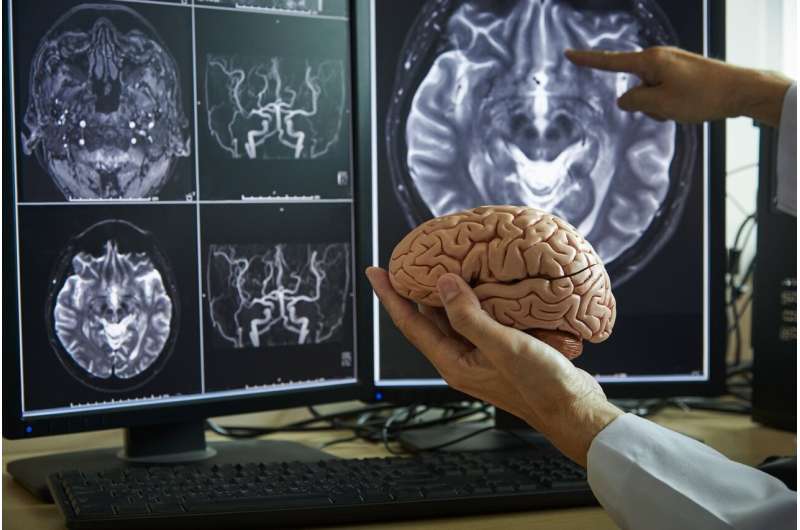This article has been reviewed according to Science X's editorial process and policies. Editors have highlighted the following attributes while ensuring the content's credibility:
fact-checked
peer-reviewed publication
reputable news agency
proofread
Adults' phobias show up as differences in the brain

Adults' phobias can be correlated with changes in the structure of their brains, a new study finds.
What's more, the neurological differences seen in adults with phobias are more extensive than those observed in people with other forms of anxiety.
Phobia is the most common anxiety disorder, affecting more than 12% of people, said the research team led by Kevin Hilbert, a psychology research assistant with the Humboldt University of Berlin in Germany.
Unfortunately, there hasn't been much research directed specifically at phobias, the team said.
"Few studies have examined differences in brain structure associated with specific phobia, and those were generally conducted in small samples and targeted isolated regions of interest," the team wrote.
To take a closer look, researchers examined MRI scans from more than 1,400 children and adults with a specific phobia, as well as nearly 3,000 healthy people.
The most common phobias were animal phobias (739 participants) and phobias related to blood, injury or injections (182 participants).
They found that people with phobias had increased thickness in some parts of the frontal cortex, as well as reduced size in regions like the caudate nucleus, putamen and hippocampus.
The altered regions are involved in fear-related brain processes like movement, aversion and emotional processing.
However, the size of the amygdala—a central brain regulator of fear and aggression—was not significantly altered in people with phobia.
People suffering from blood, injury and injection phobias had more profound changes than those with animal phobias, supporting the notion that those phobias involve higher cognitive processes, researchers said. That might be why that type of phobia can elicit both fear and disgust.
Interestingly, these brain structure changes weren't found in people younger than 21. Instead, they seem to manifest during adulthood, researchers reported in the journal AJP in Advance.
"It was a surprising finding given that [phobia] onset early in childhood is so common and given that neurofunctional and structural correlates are observed in individuals with other anxiety disorders, and even in youths at risk for anxiety disorders," the research team wrote in a journal news release.
Since many childhood phobias dissolve in adulthood, the large structural changes seen in adult MRIs might reflect a more persistent form of the anxiety disorder, researchers said.
More information: Johns Hopkins Medicine has more about phobias.
Kevin Hilbert et al, Cortical and Subcortical Brain Alterations in Specific Phobia and Its Animal and Blood-Injection-Injury Subtypes: A Mega-Analysis From the ENIGMA Anxiety Working Group, American Journal of Psychiatry (2024). DOI: 10.1176/appi.ajp.20230032
Copyright © 2024 HealthDay. All rights reserved.


















